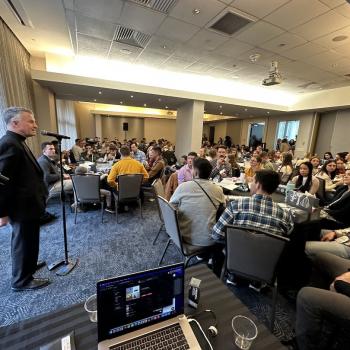The religious-liberty clauses of the First Amendment to the Constitution provide the civic framework for teaching about religion in the public schools. The U.S. Supreme Court has interpreted the First Amendment to mean that public schools may neither promote nor inhibit religious belief or nonbelief. The public school curriculum may not, therefore, include religious indoctrination in any form (including hostility to religions or religion in general). Such teaching would constitute state sponsorship of religion and would violate the freedom of conscience protected by the First Amendment.
Religious indoctrination, however, is not the same as teaching about religion. In the 1960s school-prayer cases (that prompted rulings against state-sponsored school prayer and devotional Bible-reading), the Supreme Court indicated that public school education may include teaching about religion. In Abington v. Schempp (1963), the Court stated:
[I]t might well be said that one's education is not complete without a study of comparative religion or the history of religion and its relationship to the advancement of civilization. It certainly may be said that the Bible is worthy of study for its literary and historic qualities. Nothing we have said here indicates that such study of the Bible or of religion, when presented objectively as part of a secular program of education, may not be effected consistently with the First Amendment.
All public school teachers must have a clear understanding of the crucial difference between the teaching of religion (religious education) and teaching about religion. In 1988, a broad coalition of 17 religious and educational organizations published guidelines that distinguish between teaching about religion and religious indoctrination. The guidelines state, in part:
- The school's approach to religion is academic, not devotional.
- The school strives for student awareness of religions, but does not press for student acceptance of any one religion.
- The school sponsors study about religion, not the practice of religion.
- The school exposes students to a diversity of religious views; it does not impose any particular view.
- The school educates about all religions; it does not promote or denigrate any religion.
- The school informs students about various beliefs; it does not seek to conform students to any particular belief.
In addition to these baseline distinctions, the religious-liberty clauses provide guiding principles for how teaching about religion may best be carried out in the classroom. Charles Haynes, the First Amendment Center's senior scholar, calls these principles the civic values at the heart of American citizenship: "They are so fundamental and enduring that they may be called the ‘Three Rs' of religious liberty":
Rights: Religious liberty, or freedom of conscience, is a basic and inalienable right founded on the inviolable dignity of the person. In a society as religiously diverse as the United States, it is essential that schools emphasize that the rights guaranteed by the Constitution are for citizens of all faiths and none.
Responsibilities: Religious liberty is not only a universal right, but it also depends upon a universal responsibility to respect that right for others, treating others as we ourselves desire to be treated. All citizens must recognize the inseparable link between the preservation of their own constitutional rights and their responsibility as citizens to defend those rights for all others. This is what the Williamsburg Charter calls the "Golden Rule for civic life."
Respect: Debate and disagreement are vital to classroom discussion and a key element of preparation for citizenship in a democracy. Yet, if we are to live with our differences, particularly our religious differences, how we debate, and not only what we debate, is critical. At the heart of good citizenship is a strong commitment to the civic values that enable people with diverse religious and philosophical perspectives to treat one another with respect and civility.
Rights, responsibilities, and respect, then, Haynes says, are the civic ground rules for teaching about religion in the public schools, just as they are the ground rules of American citizenship. When we teach about the many cultures and religions of our nation and the world, we must simultaneously teach our common ground -- the civic values and responsibilities that we share as American citizens. If this is done, teaching about religion becomes an excellent opportunity to teach respect for universal rights and mutual responsibilities, within which the deep differences of belief can be negotiated.
FirstAmendmentCenter.org works to preserve and protect First Amendment freedoms through information and education. The center serves as a forum for the study and exploration of free-expression issues, including freedom of speech, of the press and of religion, and the rights to assemble and to petition the government.




